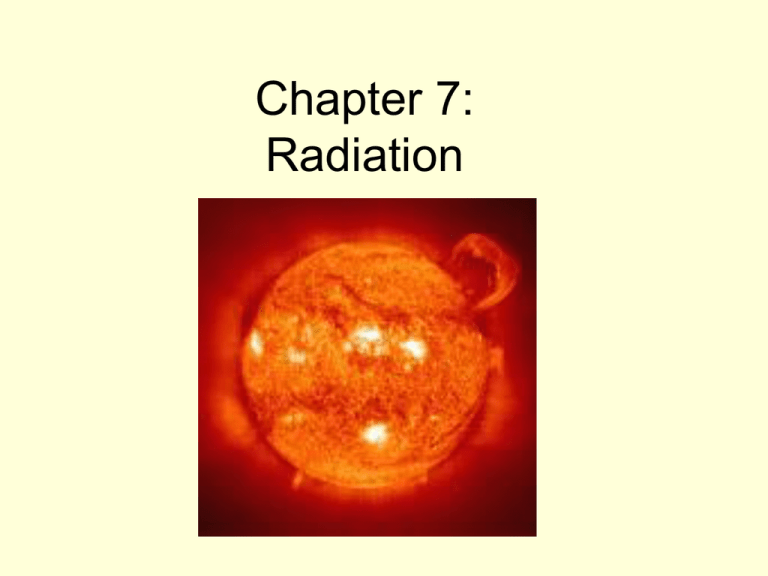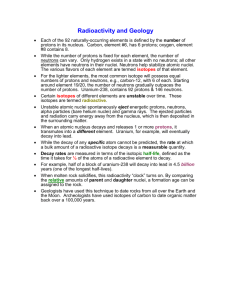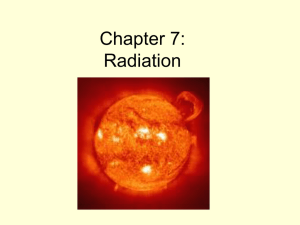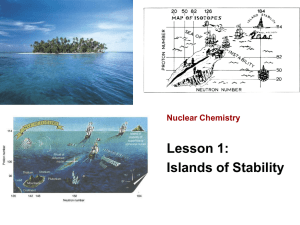PP - myndrs.com
advertisement

Chapter 7: Radiation Remember from Chemistry: • Mass number: the number of protons + number of neutrons • Atomic number: the number of protons in an atom of an element. • Isotopes: atoms of the same elements that have a different number of neutrons and therefore a different mass number There are many isotopes of carbon. • For example: carbon-12, carbon-13 and carbon-14 • How many protons in each of these atoms of carbon? – 6 • How many neutrons in each of these atoms of carbon? • Carbon-12 = ____ neutrons • Carbon-13 = ____ neutrons • Carbon-14 = ____ neutrons • Carbon-12 = 12 C 6 • Carbon-13 = _____ • Carbon-14 = _____ Mass number Atomic number Isotopes of Hydrogen • Hydrogen: 1 proton and 0 neutrons • Deuterium: 1 proton and 1 neutron • Tritium: 1 proton and 2 neutrons Radioactive Decay: • The nuclei of some isotopes are stable, whereas, others are not. • In unstable nuclei, the nuclear force is not enough to overcome the repulsive electrical forces with in the nucleus. • As a result the nuclei are radioactive. • When an unstable nucleus emits radiation, it undergoes a radioactive decay Types of radioactive decay • Alpha Decay: • Particle emitted: Helium nucleus • Result: Atom with two fewer protons and neutrons • U → Th + He • U → Th + Types of radioactive decay • Beta • Particle emitted: Electron • Result: # of neutrons decrease by one and the # of protons increase by one = new element • C → N + e • C → N + β Types of radioactive decay • Gamma • Particle emitted: No particle, but gives off excess energy • Result: No change to type of nucleus, it just has less energy. • Ba → Ba + Gamma radiation • Ba → Ba + Assignment: • Fill in the 7.1 worksheets p125 (all) and 126 (odd numbers) Half Life: • Half Life: The time required for half the nuclei of a sample of a radioactive isotope to decay. • The half life is the same regardless of the starting amount of the isotope. • Because the amount of all radioactive isotopes decrease by half in each half life, graphs that show the amounts of these isotopes at various times look similar. • The only difference is the time scale for decrease. Examples of half life: 120 100 80 60 40 20 0 carbon 0 Uranium 20000 40000 60000 80000 Time (Years) sample of uranium amount of sample left carbon 600 500 400 300 200 100 0 Uranium 0 50000 100000 Time (years) 150000 Half Life Table for Solving Word Problems Time # of Half lives Amount of parent isotope ** optional ** Amount of daughter isotope 0 0 Original Amount 0 1 2 3 4 Practice Problems Homework: • Fill in the 7.2 worksheets p134 and 135




![tutorial #14 [nuclear physics and radioactivity] .quiz](http://s3.studylib.net/store/data/008407305_1-1884988a9e5162a6b7a2b0d0cf8c83c5-300x300.png)

